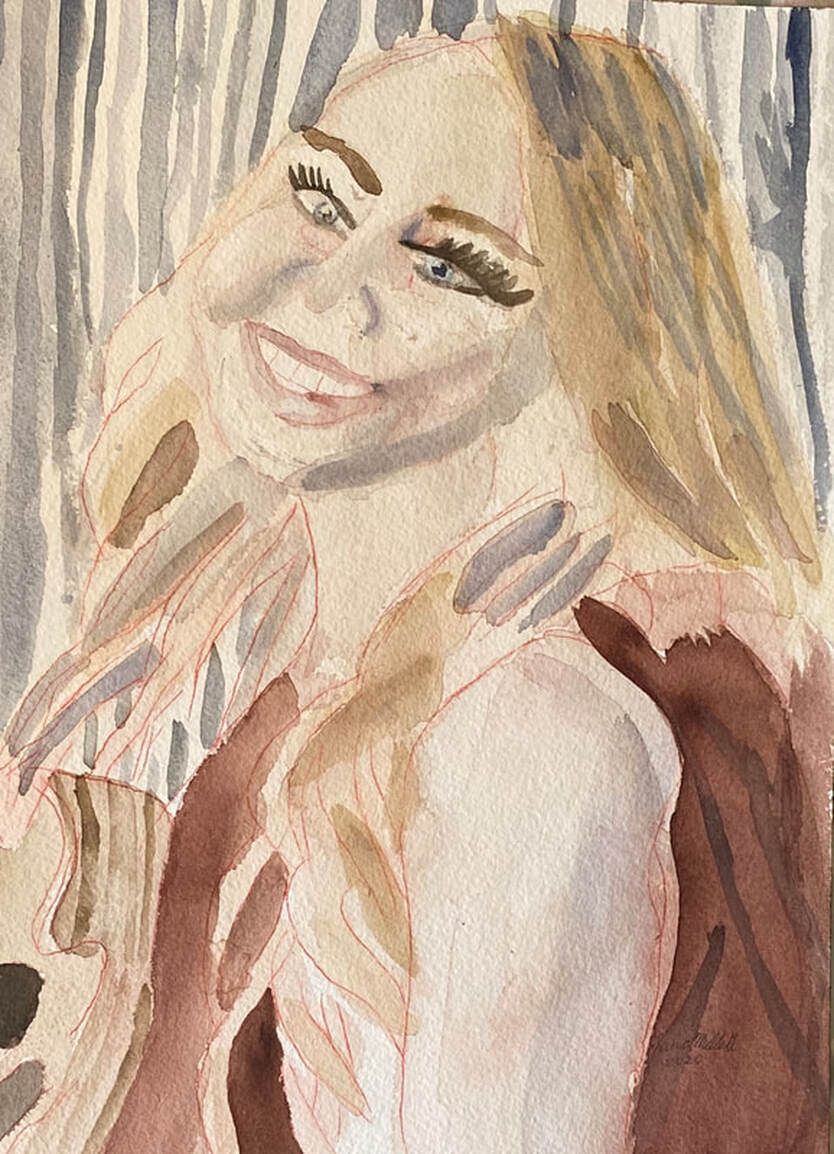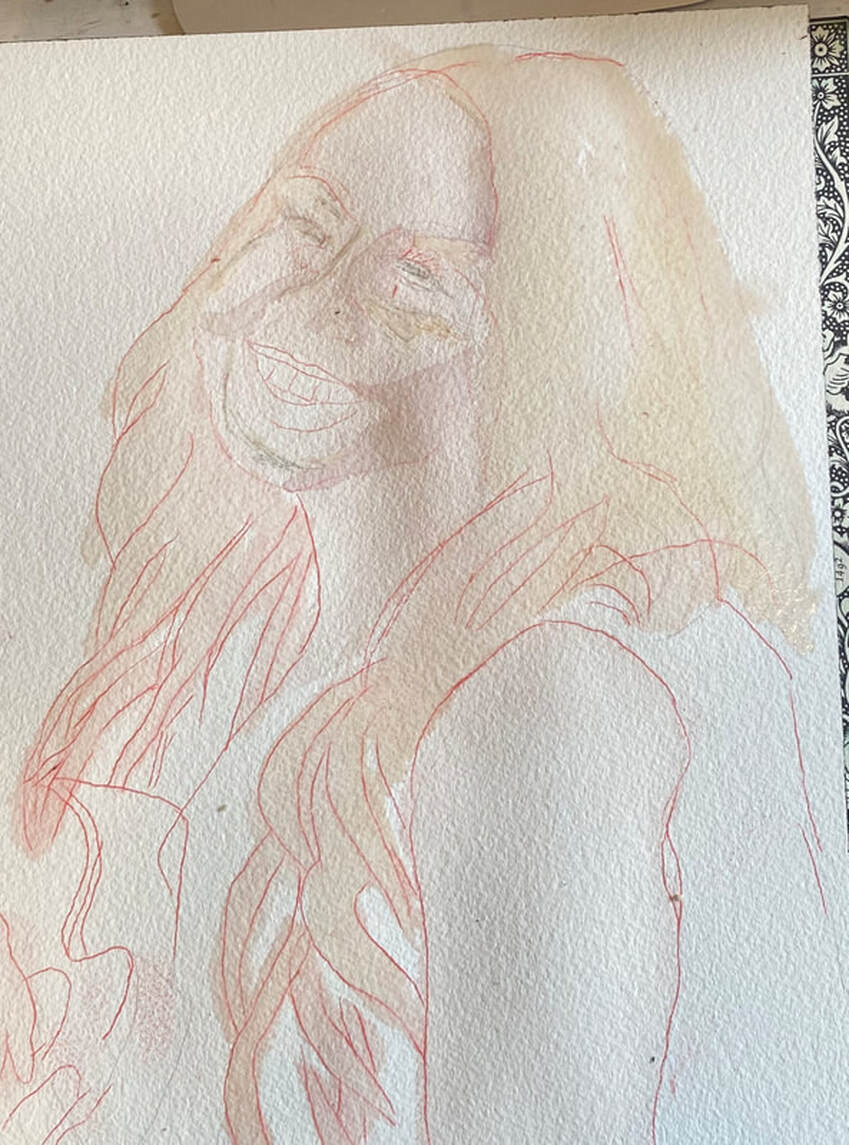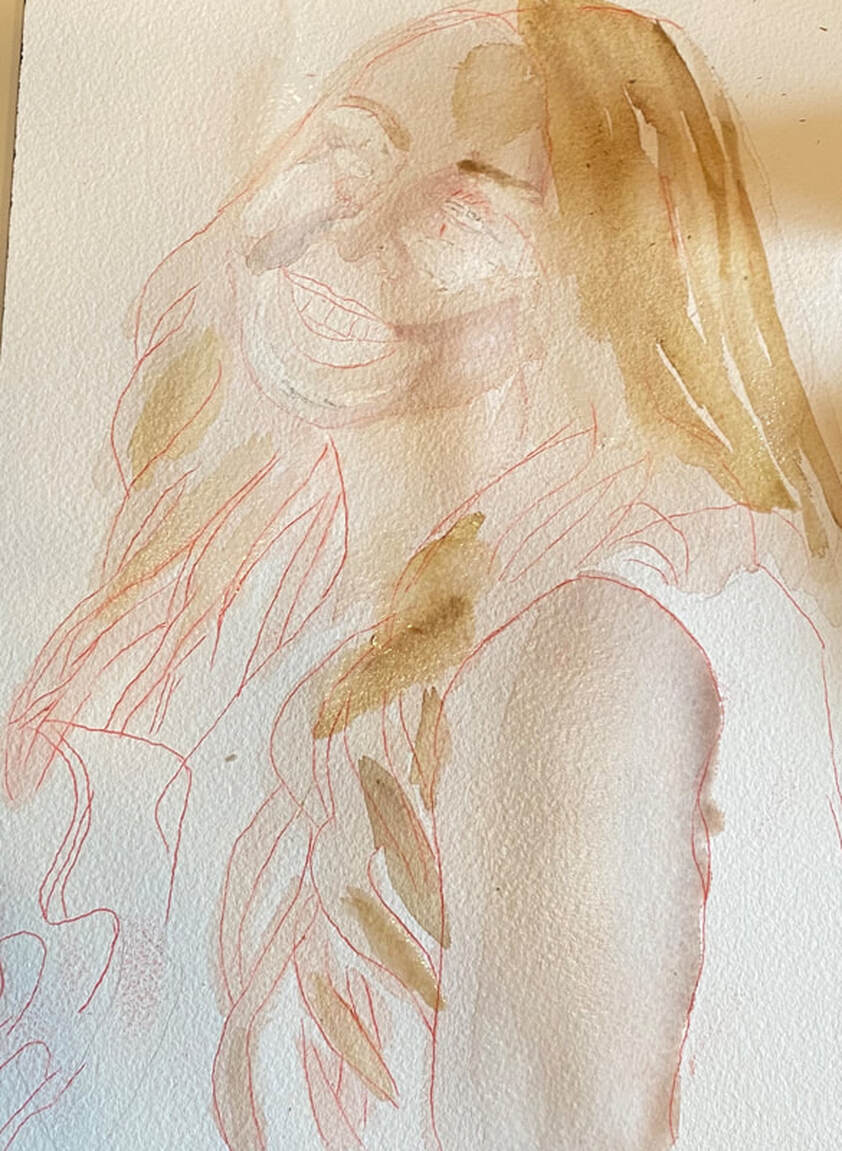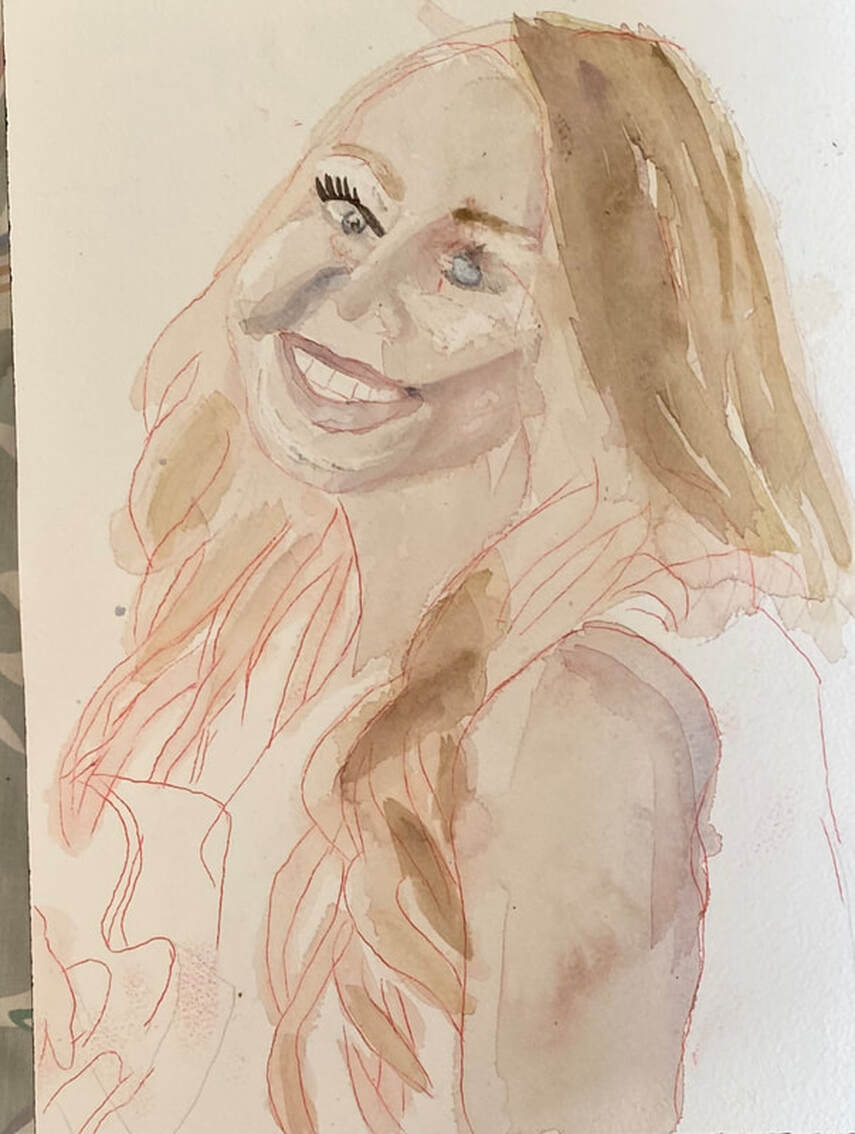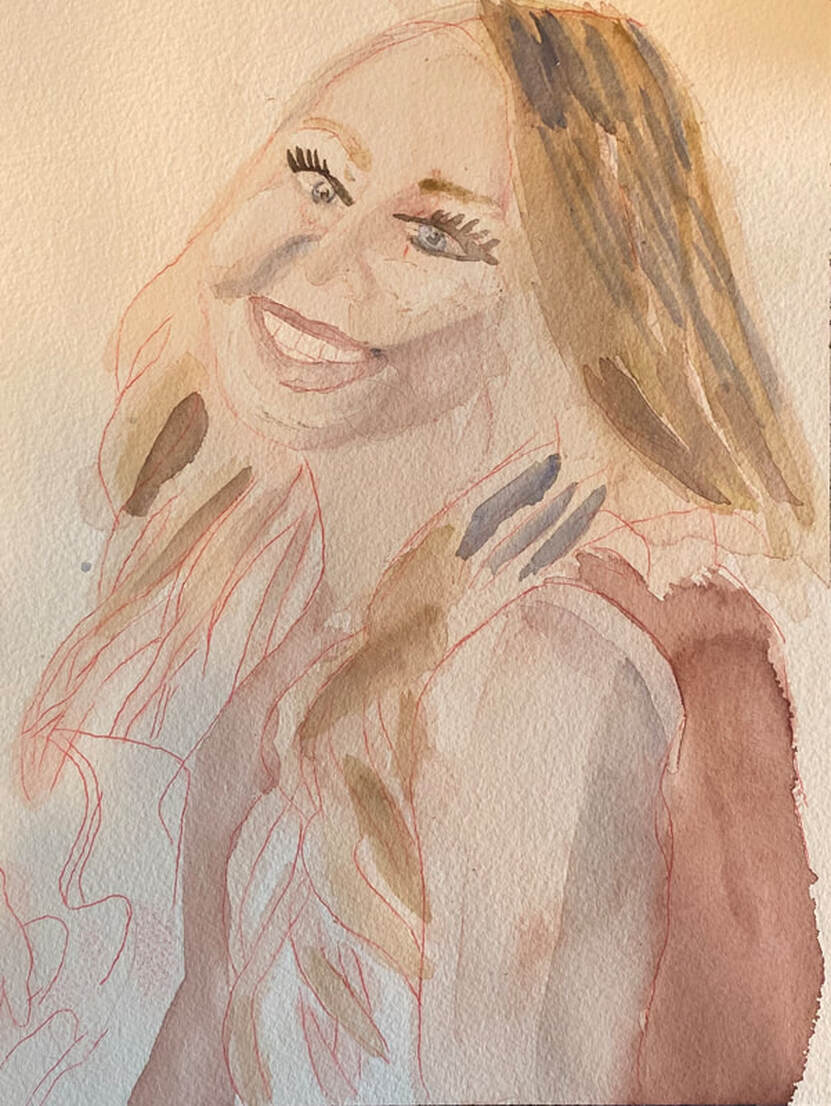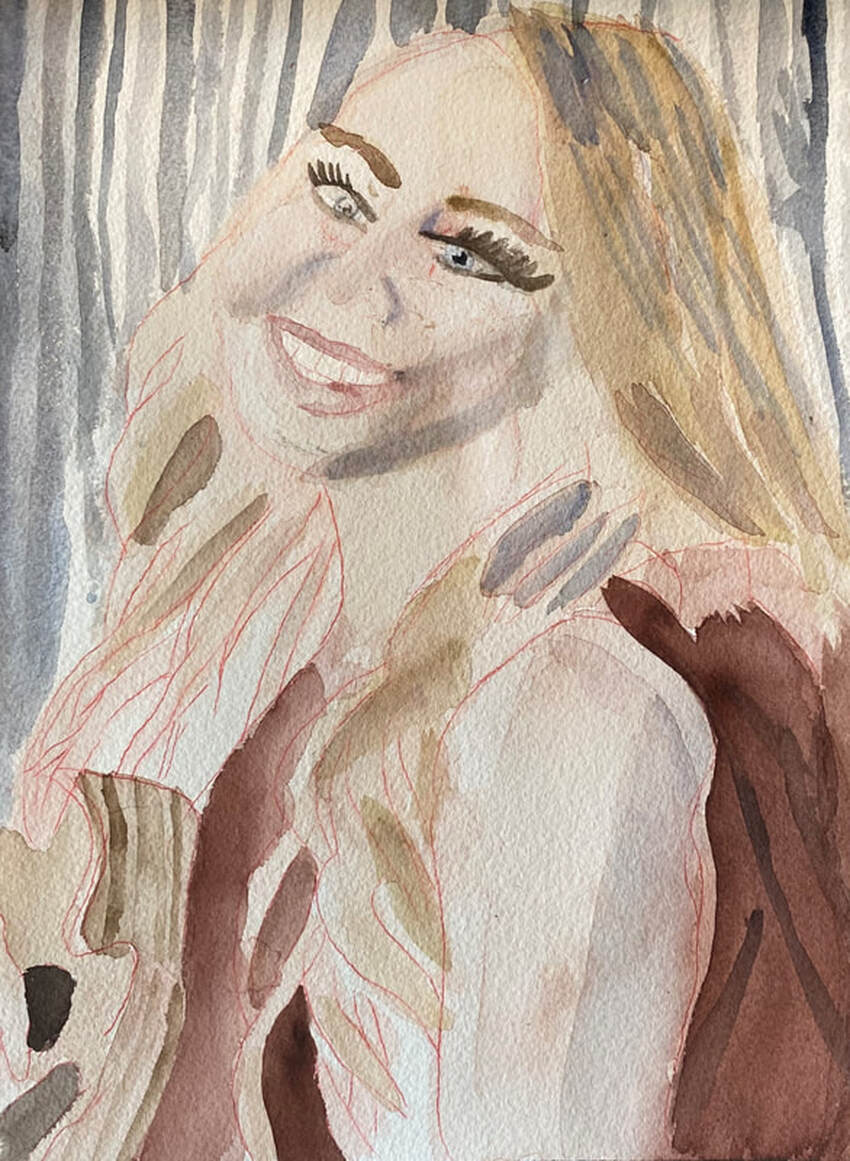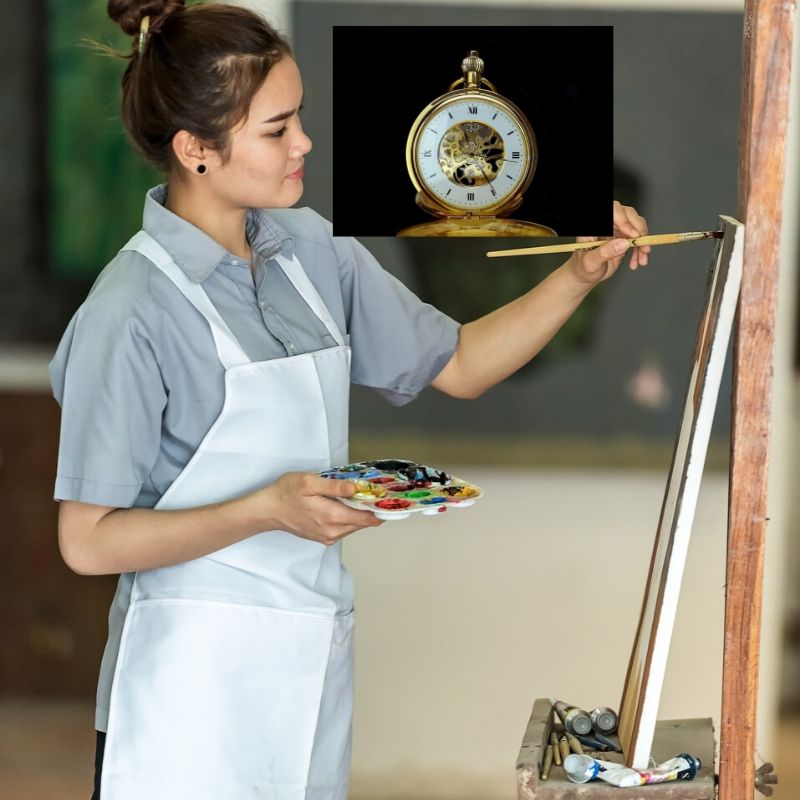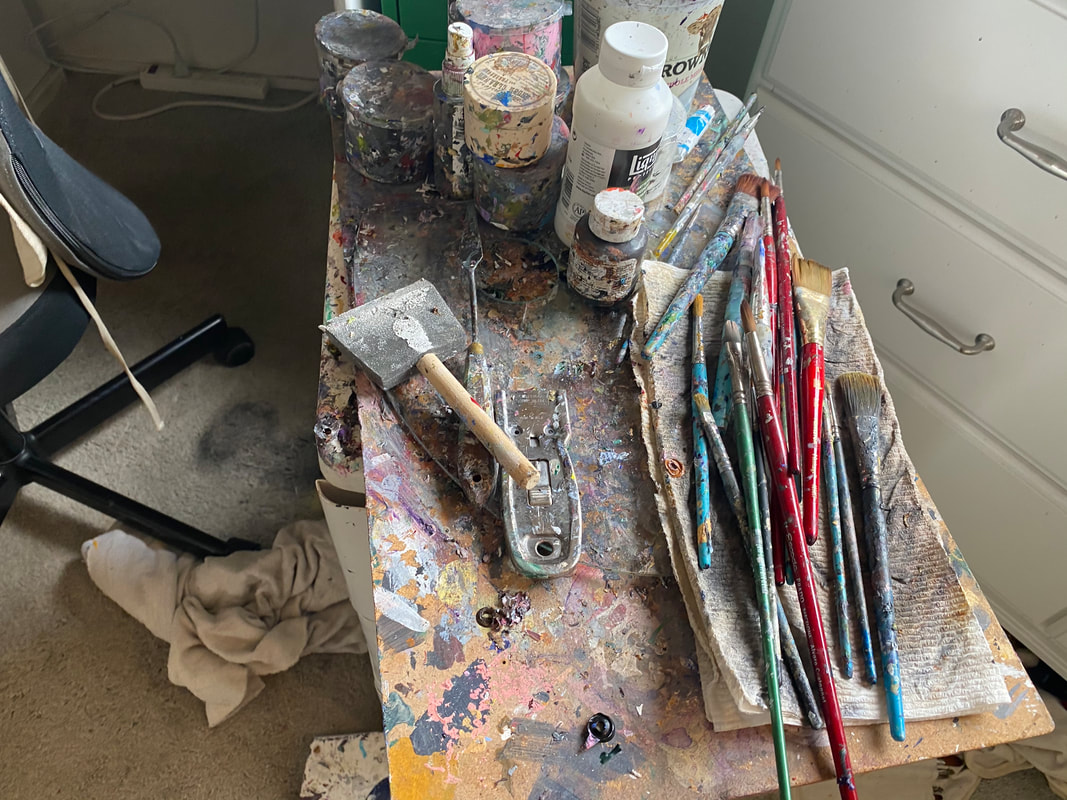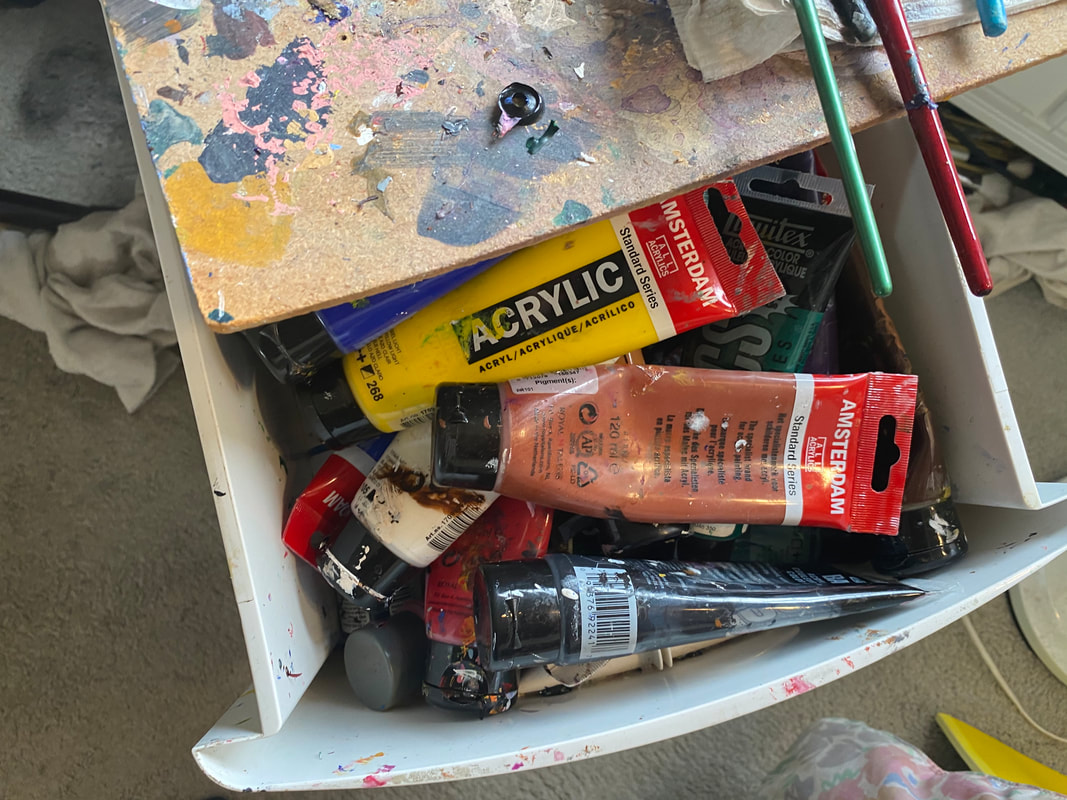|
For her skin, I mixed green and red, with a little more emphasis on red. I laid down masking fluid on the bridge of her nose, the tops of her cheeks, the tops of her brow-bones, and the center of her chin so those parts wouldn't get paint on them. Then I painted the first layer of color on her skin using wet on wet. For her hair, I mixed purple into some yellow that was already on my palette, then some more yellow into that. As with her face, I applied the first layer of color to her hair using the wet on wet technique. Later I went back to her face and painted on the first shadow using the same color as I did for the first layer, just with less water. I decided to the shadows on her face needed some blue in them, which I layered on top of the main flesh color. I also painted darker layers on her hair. My goals for today were to paint another layer on her hair and to paint her eyes. I'd been thinking that my second layer on her hair was too yellow, so I mixed more purple into it to make it browner. Her eyes had highlights and rims around the irises that I really thought would add something special to the piece. Before I started painting, I laid down masking fluid in the appropriate places to preserve my whites their. Now, I was pretty happy with the way the right eye turned out, but I felt like the left eye was a fail. I'd painted the pupil without waiting for the iris layer to dry completely. In my experience, small details in eyes, pupils, rims, etc, are always best painted using wet on dry, and oftentimes its even best if your brush isn't very wet. I know this, but I get impatient. Anyway, I went over the left eye with white acrylic paint and started over. I needed something to do while the first new layer of paint on my subject's left eye dried, though, so I painted her mouth using some mixed red paint I already had in my palette. Using my liner brush almost dry and some black paint, I painted her eyeliner and lashes on her left eye. Today I made some good progress on her left eye. Her blonde hair needed some blue shadows. I thought the orange on my palette was a bit too bright as it was, so I added more orange it. Note to self: If you want soft edges, make sure the part of the paper you’re painting on is sufficiently wet. Her top is a very brownish red color, so I started by adding brown to the red that was already on my palette. It was too brown, though, so I added more red. Adding a bit of green, the compliment to red, was what really did it. Her eyeliner and lashes on her left eye still need some sharpening up and I worked on that today. I also saw that the left side of her face needed some more blue shadows, especially along her jaw. That was after I worked to soften the edges of the blue shadows I’d put in her hair. I used wet on wet to paint these shadows. I painted the pink in her cheeks today and finally was able to get enough black paint on my brush to make a bold line above her left eye. While I was working, though, I realized I never painted a line on the bottom of her right eye. ‘Cant forget that. I started to paint her guitar, first using the same brown I’d been using for her skin for the side. I did a wash of wet on wet first, then used a smaller brush and the same paint with less water in it for the texture lines. I mixed yellow and purple into this color to paint the top part of the guitar. I thought I was done with her top, but I saw on the back there were some folds. I mixed more green into my red so it to tone it down again, since I’d been using it for her cheeks and so had added red to it. I took a small brush and, with very little water mixed in the paint, I painted folds in the form of darker shadows along the back of the woman’s top. 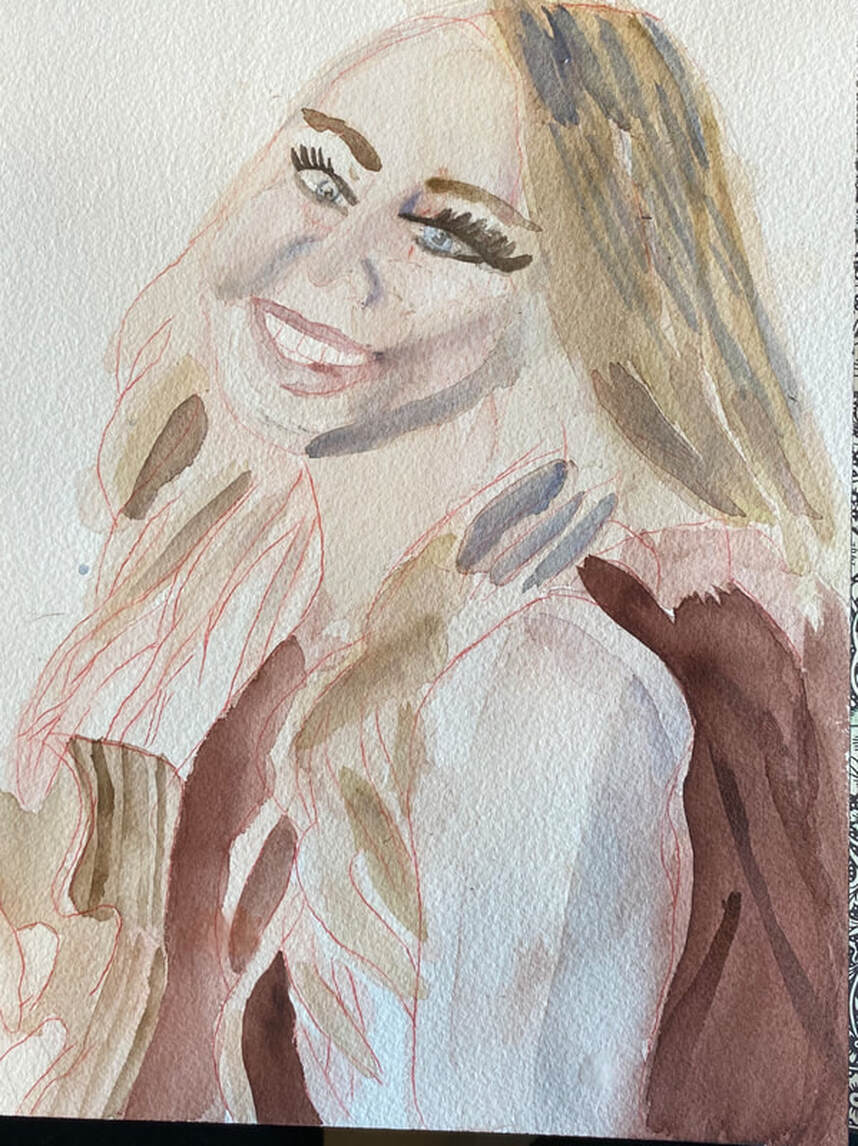 Today I painted some blue gray streaks in the background using a small filbert watercolor brush. As always, I started with the lightest shade, and, after waiting for that to dry, I layered darker colors on top of it, using the same color, with less water.
0 Comments
1. Have a dedicated workspace, or if you can't have a dedicated workspace, at least keep your supplies organized so you can grab what you need quickly. I admit, I'm terrible at this. 2. Keep a loose wrist, accept when doing fine detail. I've talked about this a lot recently. When your wrist is loose, you can make fluid strokes in a matter of seconds. This also results in a higher quality painting because you don't end up with those stop and start makes that you would get if you were painting with a tight wrist. So, win, win. 3. Trace your subject 4. Use gridded paper. I don't recommend trying to draw your own grid. I tried that and it did not work out. I learned about this trick from my friend Shana Rowe Jackson. You can check out her youtube videos here. 5. Work distraction free. This won't necessarily cut down on the amount of hours a piece will take, but it will help you get those hours in in less time. I also think painting and drawing becomes a more enjoyable experience when you do it without distractions like your phone. I understand if you're reference photo is on your phone. Mine is. Just turn on silent/do not disturb, and consider blocking social media apps or deleting/offloading those from your phone during the time you want to focus. 6. Use a blow dryer to dry wet paint so you can go on top of it right away. 7. Paint wet-into-wet. Bob Ross famously painted in this style and he finished an entire landscape in the time it took to do a half-hour television episode. Painting can go by a lot faster if you're not waiting for your layers to dry. Apparently, Mr.Ross never spent more than two hours on a painting. 8. Work on smaller surfaces. If you really want to get something done quickly, don't go bigger than a 9x12. I've seen canvases and boards that are as small as 4x6. These are all ways to be more efficient with your time as an artist and I recommend the first two for everyone, regardless of your style or medium. But, understand that making a quality piece, particularly in realism, requires you to put a certain amount of time in. I don't necessarily recommend prioritizing getting a painting done as quickly as possible. I want to bring your attention back to this eye. 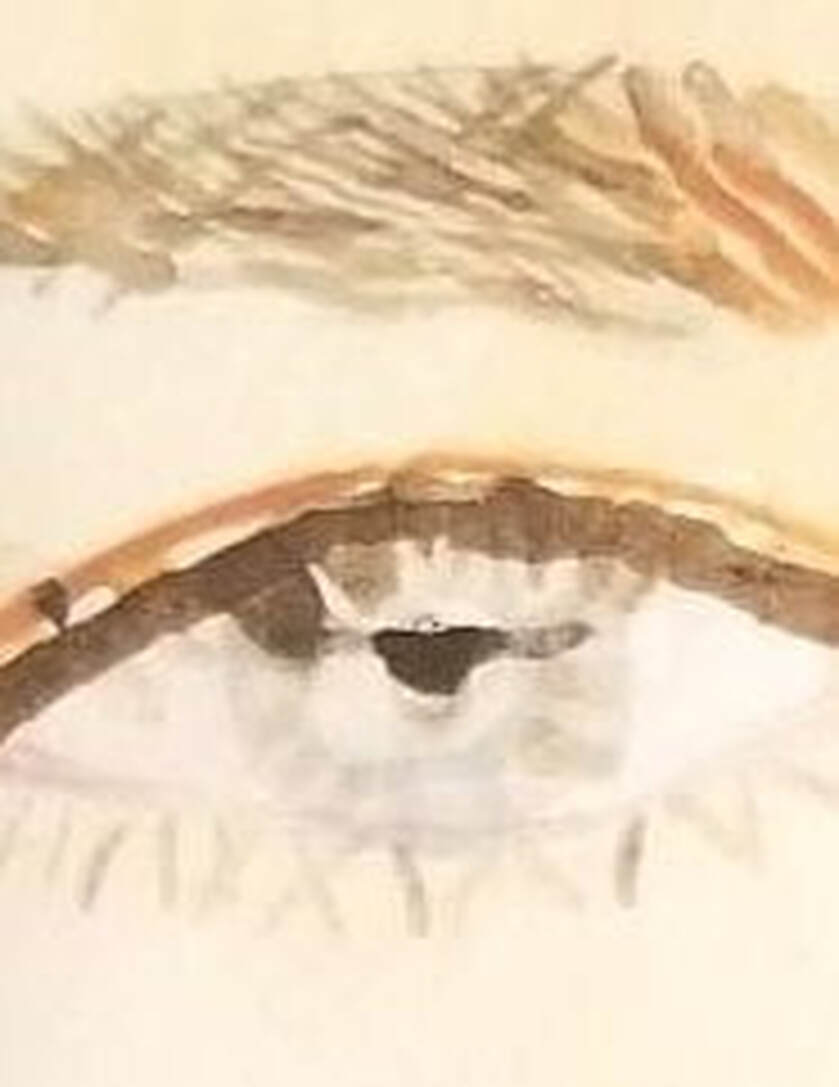 I probably spent as much time on this eye as have doing some entire faces and it's because of the time I spent, that I got the results I got, which I'm very proud of.
|
Sara MillettPainter of portraits and wildlife Archives
November 2023
Categories
All
|
